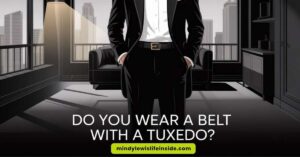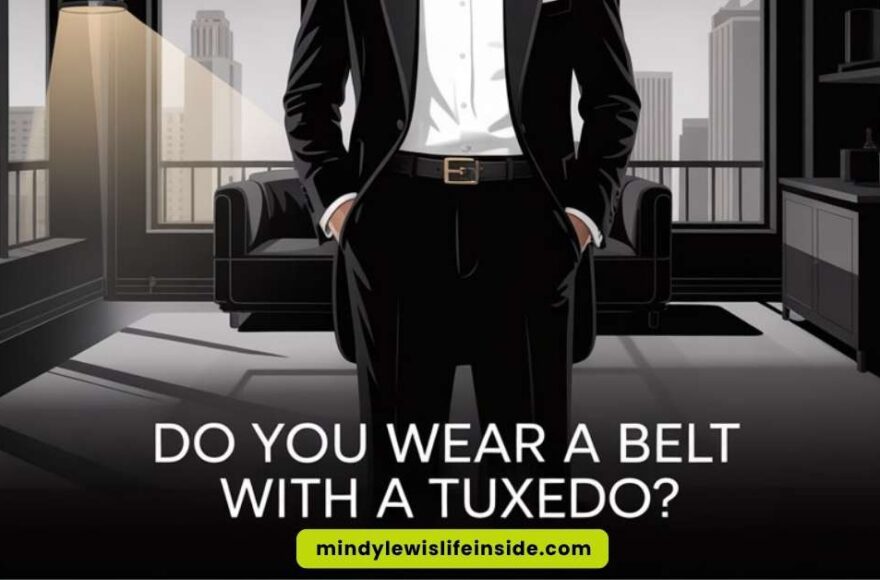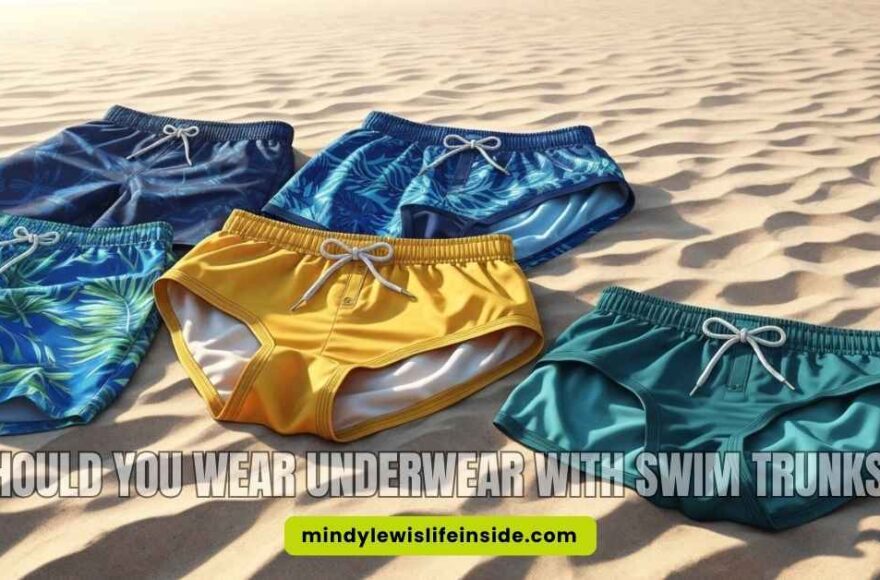Do You Wear a Belt With a Suit? Tips for Beginners
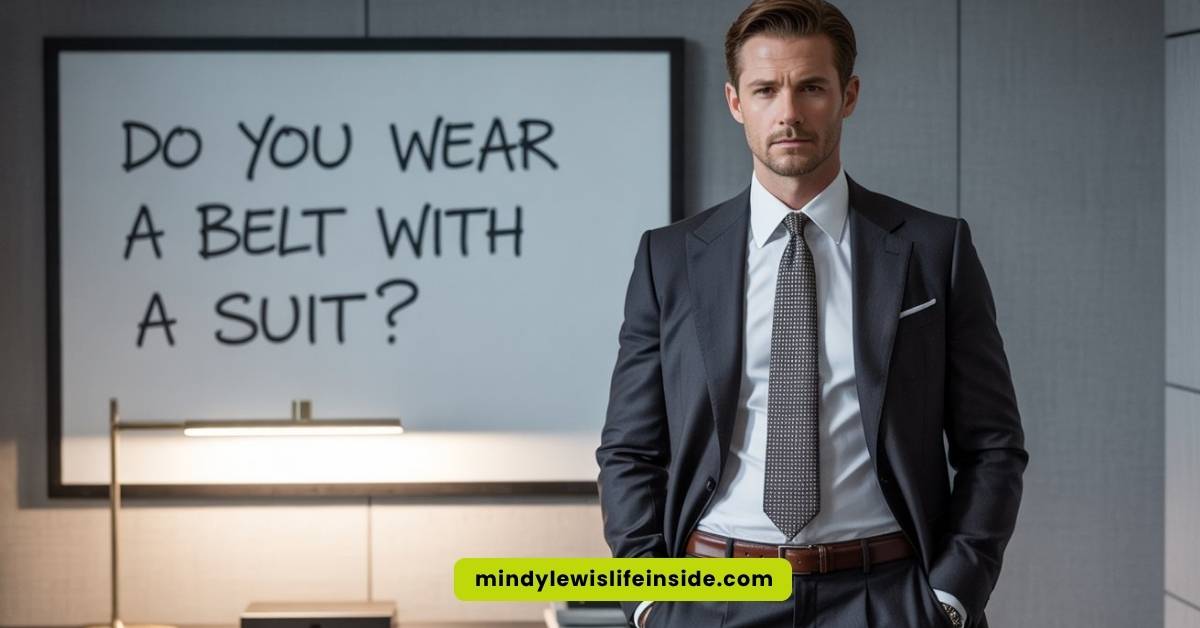
As an Amazon Associate, I earn from qualifying purchases
Are you unsure if you should wear a belt with your suit pants? You are not the only one who wonders about this. A lot of people have this question, especially if they are new to dressing up in suits. The question of whether to wear a belt with a suit is a nuanced one in men’s fashion, often sparking debate among style enthusiasts and traditionalists alike.
While seemingly a simple accessory, the belt’s role in suiting etiquette is governed by a blend of historical context, practical considerations, and evolving modern trends. The choice often comes down to personal preference. There are a few guidelines that can help you get a perfect fit and look polished at the same time.
In this blog, you will find out when you need to wear a belt, when it is okay to not wear one, and how to make the right choice each time with your suit pants.
Understanding the Belt and Suit Debate
The debate about wearing a belt with suit pants has been going on for a long time. In the past, most men would use a belt with their suit pants to help hold them up. Now, thanks to good tailoring and changing views, personal preference matters a lot. Some people think a belt is needed for a formal look. Others like the clean lines you get from suit trousers without a belt.
Traditionally, the answer to “Do you wear a belt with a suit?” is conditional: If your suit trousers have belt loops, a belt is generally expected. This unwritten rule serves both a functional and aesthetic purpose. Functionally, a belt helps secure trousers that might otherwise be slightly loose, ensuring a neat and polished appearance. Aesthetically, belt loops without a belt can appear unfinished or neglected.
Style rules are different now. Not every pair of pants or trousers, even with a suit, needs a belt. Never forget to look at the belt loops on your trousers, the way your suit fits, and the style you want to show. So, do you have to wear a belt with your suit pants, or is it fine to skip it? We will talk more about this in the next sections.
Traditional Expectations in Men’s Fashion
For many years, men’s fashion followed some pretty strict rules. If you bought a pair of pants with belt loops, people said you had to wear a belt. This rule was about more than holding up your trousers. In a formal look, empty belt loops made it look like you did not finish putting your outfit together or that you did not care about your style. A belt showed you wanted to look neat and well-dressed.

Belts themselves have a long and practical history, dating back to the Bronze Age. Early belts were primarily utilitarian, used to hold tools, weapons, or secure garments. Their evolution into a significant fashion accessory is more recent. In the context of suits, the prominence of belts increased as men’s fashion became more casualized, particularly in the 20th century. Prior to this, trousers were often held up by suspenders (braces) or were custom-tailored to fit precisely at the waist, negating the need for a belt. The widespread adoption of belt loops on trousers made the belt a standard accompaniment.
Long ago, belts were needed because you could not always find pants that gave a perfect fit off the rack. At first, the belt helped your pants stay up, but soon it turned into more than that. It became a way to show your own style and give a nice ending touch to a suit or a formal look. So, when someone left belt loops empty, people took it as a sign you did not think about your appearance. It was seen as not good, or even sloppy.
Good manners in men’s fashion also said your belt should match your shoes and the buckle should look good with the one on your watch. Taking care with details like this showed that you had respect for a formal setting and that you understood classic style for men.
Modern Trends and Evolving Norms
Fast forward to today, and many style rules are not as strict. A lot of men now choose suit trousers made without belt loops. Most of these are done by a tailor, so you get a perfect fit. This new way gives you a clean, smooth look. There is no break from a belt at the waist. “Fashion is about showing your own identity,” says David Ambrico, founder at Over & Under. He supports this personal way of dressing.
A significant trend in contemporary menswear is the embrace of beltless suit trousers. This is often achieved through side adjusters (e.g., buckle adjusters, tab adjusters) that allow for a precise fit around the waist without the need for a belt. This creates a streamlined, uninterrupted look, which is often preferred for its elegance and formality. The ultimate goal for many is a suit trouser so perfectly tailored that it requires no external support. This trend is gaining popularity among those who prioritize a sleek silhouette and a more formal aesthetic.
Designers and brands now make trousers with side tabs or adjusters, so you do not need a belt. Many high-end suits and tuxedos do not have belt loops at all. This shows that skipping the belt is stylish, and it is done on purpose. Younger men who watch fashion trends really like beltless suits.
Suspenders (braces) are also experiencing a strong comeback, particularly among those who appreciate classic menswear and a more comfortable fit. Suspenders allow trousers to hang more naturally from the shoulders, creating a cleaner, more elegant drape without the bunching that can sometimes occur with a belt. For formal occasions or vintage-inspired looks, button-in suspenders are considered the more traditional and refined choice over a belt.
In the end, it is about personal preference and feeling sure about what you wear. If leaving out the belt helps you get that sharp, made-just-for-you look, go for it. The one thing that matters is your trousers should fit like the tailor made them just for you.
When Should You Wear a Belt With a Suit?
There are still many times when you should wear a belt. If your suit trousers have belt loops, you can use a belt to finish your formal look. It makes your outfit look complete. This is the most consistent and widely accepted rule: if your suit trousers have belt loops, a belt should generally be worn.
Leaving belt loops empty is often perceived as an unfinished look, both in traditional etiquette and in the eyes of many style experts. For many dress codes, if you see belt loops on trousers, that is a sign that you should add a belt. This helps you be well-dressed.
There are practical reasons for this too. Sometimes, your trousers might not fit tight at the waist. You may also be in a place where tradition is important. At these times, a neat belt is useful and stylish. It helps you feel sure of yourself and look sharp.
Dress Codes and Formal Events
Formal settings have their own set of rules, and not following them can be risky. When you have to dress up for a formal look—like a wedding, job interview, or a business meeting—it is a must to wear a belt if the suit trousers have belt loops. Pick a buckle that is easy to see but not too flashy, and be sure it fits well with the rest of your outfit.
- Black-tie events: If you are wearing a classic suit with belt loops, you need to have a matching belt. The only time you can skip the belt is when you wear a tuxedo, because that outfit does not need a belt. Tuxedo trousers are designed without belt loops and are meant to be worn with suspenders.
- Professional meetings: For work meetings, be sure to match their belt to your shoes. That way, you have a business-ready look.
- Ceremonies or semi-formal events: To be safe, use a belt with your suit trousers in these cases.
What is polite or accepted can change, but if you follow these tips you will look right for the event and show respect to others. For the most fancy dress codes, you should only not wear a belt if the trousers do not have belt loops and they fit you very well.
Situations Where a Belt is a Must
There are some times when you really need to wear a belt. If your suit pants do not fit tight enough or if you go to a place that is more serious, having a good belt will make you look tidy and like you put thought into your style. Check out these main moments when a belt is the thing that brings your look together:
- Pants with belt loops: Any time there are belt loops on your pair of pants, you should put on a belt.
- Tucked-in shirt: If you tuck in your shirt, a belt will clean up your waist and help you look sharp.
- Business settings: In most offices, it is best to use a formal belt and match it with brown shoes.
- Public speaking or presentations: A belt will help you come off crisp and sure of yourself when you face a crowd.
A belt also comes in handy if you do not know the dress code. It gives your look some polish when you feel unsure.
When to Skip the Belt With a Suit
There are times when choosing not to wear a belt is not only okay, but is actually the right thing to do. If your suit trousers fit you well, or if they are made to be worn without a belt, then leaving the belt off gives you a simple and smart look. With new ways to make trousers, you do not have to wear a belt with every dressy outfit.
This is particularly true for very formal attire like tuxedos, where belts are almost universally eschewed in favor of suspenders or a perfectly tailored waist. Many modern suit trousers, particularly those from sartorially-focused brands, feature side adjusters that allow for a precise fit around the waist without the need for a belt.
Many people do not wear belts with blazers, tuxedos, or slim-fit suits. This makes the lines of your clothes look clean and gives you a modern feel. It all comes down to how your trousers fit, what your style is, and what kind of event you are going to.
Beltless Suit Designs and Trousers
Some trousers are crafted specifically for a beltless style. These suit trousers often feature side tabs, adjusters, or even hidden fasteners, all designed by your tailor for a secure, elegant fit. Without belt loops, there’s no need to worry about a missing accessory—the design speaks for itself.
The fit here is crucial. A well-tailored pair will hug your waist comfortably, so you never miss the support of a belt. Many designers, especially for tuxedos or high-end suits, skip belt loops altogether, signaling an intentional, modern approach.
Suspenders are also gaining popularity as a traditional and comfortable alternative to belts. They allow trousers to hang more naturally, creating a superior drape and an uninterrupted vertical line, making them a preferred choice for formal occasions or those seeking a classic aesthetic.
Here’s a quick comparison:
| Trouser Type | Belt Loops | Intended Accessory | Typical Occasions |
|---|---|---|---|
| Classic Suit Pants | Yes | Belt | Business, formal events |
| Modern Tailored Trousers | No | None/Side tabs | Fashion-forward, weddings |
| Tuxedo Pants | Rarely | Suspenders/Adjusters | Black-tie, formal galas |
| Casual Suit Trousers | Optional | Belt (optional) | Day-to-day, smart casual |
Advantages of Going Beltless
Choosing not to wear a belt has some clear upsides. The main thing most people notice is a clean look. This helps you have a modern style. Your blazer and suit trousers will sit in line, which lets people see the perfect fit and the effort put into making them.
Many users on platforms like Reddit and Instagram emphasize that a belt breaks the clean, vertical line of a suit, especially when the jacket is open. Suspenders are often championed as the superior alternative for maintaining a smooth, uninterrupted silhouette.
It is also more comfortable when you skip the belt. There will be no buckle to dig into you or break up your look. You will feel at ease, especially if your trousers already have the right fit. This way, you do not have to work with any belt loops or try to match a belt with other things you wear.
Key benefits of going without a belt:
- Uninterrupted lines: This gives you a simple, modern look and lets your smart tailoring stand out.
- Greater comfort: There is no tight feeling or shifting—just the perfect fit.
- Advanced options: You can use suspenders for a classic feel, which works well with tuxedos or when you wear three-piece suits.
Beginner’s Guide: How to Decide and Get Started
If you’re new to wearing suit pants, you might wonder if you should wear a belt or not. The answer comes down to three things. Think about your suit pants, their fit, and the event you want to get ready for. Also, think about your own personal preference—for example, do you feel good with the fit a belt gives? Or do you like to wear suit pants without one for a simple look?
The most practical advice from experts and style guides is simple: If your suit trousers have belt loops, wear a belt. If they do not, do not wear a belt. This simple check will guide most of your decisions.
This part will show you easy steps for picking what suits you best. You will learn how to match brown shoes to your look and when suspenders might work for you. That way, you’ll know how to look your best and feel at ease in suit pants.
What You’ll Need Before Choosing (Belts, Suit Types, Fit)
A few important things can help you choose the right look for your suit. First, think about the type of suit pants you want to wear. Trousers can be very dressy, like tuxedos, or they can have a more easygoing fit. Make sure the belt loops on your pair of pants are not too tight, but they fit in a way that is right for you.
Next, look at how the pants fit your body and what shape they give you. You may want that classic style, or you might like something that feels new. Your suit, your belt loops, and your trousers should all match your personal preference. This way, you will get a look that works for you.
Step-by-Step: Making the Right Choice for Your Outfit
Ready to suit up? First, lay out your outfit for the day. Look at your suit pants and see if they have belt loops. Check the fit to know if they stay up on their own or if you need a belt for some help. If your outfit looks unfinished, you can choose to add a belt.
If you go without a belt, make sure your trousers are made to fit you well. If you add a blazer or special shoes, think about how a belt changes the look of your whole outfit.
Take one step at a time and don’t be worried about trying new things. It is good to feel sure about what you wear, so whether you use a belt or not, know your choice is good and enjoy your sharp, new look.
Step 1: Assess the Suit and Trousers
Start by looking at your suit trousers. Do the trousers have belt loops on the waistband? If they do, tradition says you can wear a belt, especially when you want a formal look. But some brands and styles offer suit trousers that do not have belt loops. Many new or modern trousers skip the loops for a cleaner feel.
Always check the fit of the trousers, too. Good tailored trousers fit the waist just right. They should stay up without the need for a belt. If you buy trousers off the rack and they do not fit well, a tailor can help you get the perfect fit.
Some brands that like new styles make trousers without belt loops. They may use side adjusters or hidden fasteners for a neat finish. For trousers like these, not wearing a belt is more than okay—it is what you should do for the best look.
Step 2: Consider the Occasion and Dress Code
Next, think about where you will go. Does the event need you to wear a formal look, or is it more relaxed? Look up the dress code before you go. This way, you will not have to guess.
- Formal events: Go with a classic belt if your trousers have loops.
- Semi-formal/creative settings: You can have more fun here. Use a belt if you think it makes the look better, or leave it off to try something new and trendy.
- Casual gatherings: Brown shoes, nice suspenders, or even not wearing a belt at all can work well.
The right choice is about your personal preference, but also what the event expects. Do not forget how much the setting can shape what works best!
Step 3: Decide Between Belt or No Belt
Now it’s time for you to pick what you like best! Go with personal preference, but also think about what most people do and what your suit trousers need. If you like the way a belt looks or the way it feels, go ahead and wear one with confidence. If you want to show off the perfect fit of your trousers, skip the belt for a sharp and modern style.
Each choice has its good points. Wearing a belt can split up a one-color look and bring it all together. This works well if you match your belt to your brown shoes. If you go without a belt, you will look up-to-date and show that you feel good about fashion.
No matter if you pick a belt or not, be sure it fits what you like. When you feel good, the way you look will stand out—and that’s the true way to make any look work.
Step 4: Select a Belt That Matches (if needed)
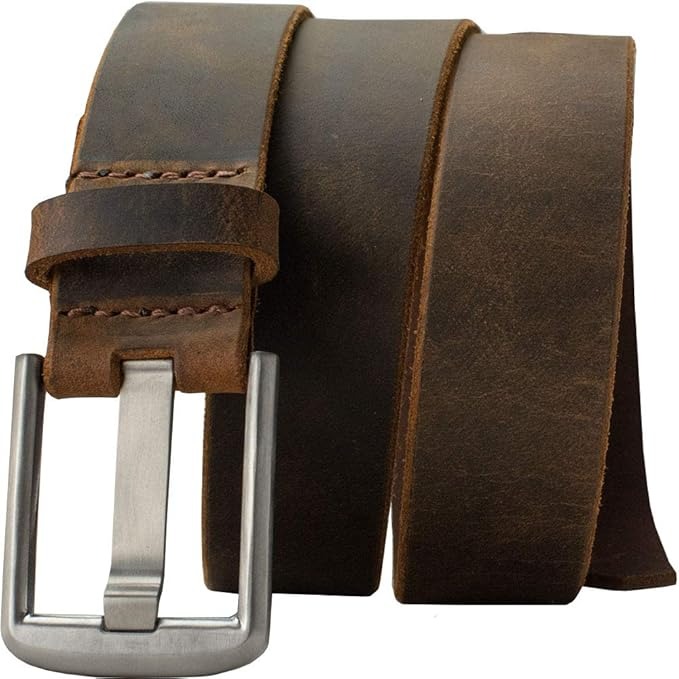
Nickel Smart
Titanium Wide Pin Distressed Leather Belt
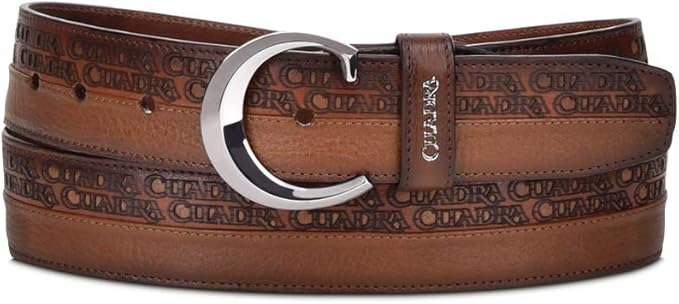
Cuadra
men’s urban belt
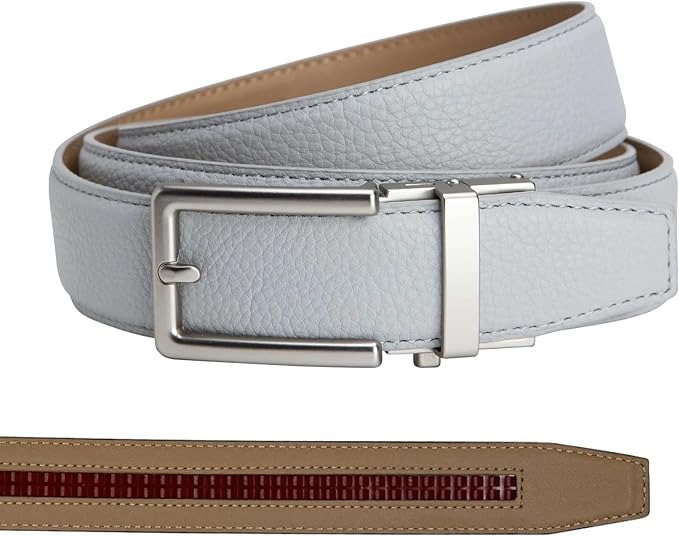
Nexbelt
Vegan Leather Ratchet Belt
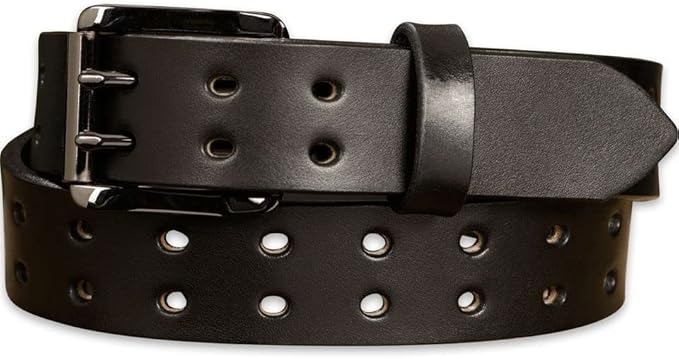
Bullhide
Mens Leather Belt
Finding the right belt for your suit pants can help you look better. If your suit pants have belt loops, try to match the belt’s color and leather with your shoes. For example, wear a brown belt with brown shoes.
The buckle and your suit should go well together, so think about how formal your suit is. Your belt should fit you well, but it should also show off your blazer and trousers in a good way. This helps your whole outfit look sharp and put together.
Styling Tips for Wearing a Belt With a Suit
Wearing a belt with a suit is not hard. Still, a few smart steps help you do it right. Pick the buckle that matches your suit trousers. You should also choose a belt that goes with your brown shoes or black shoes. This gives you a clean and classic look.
If you want to try something fresh, you can use a belt with a new color or a cool texture. Just remember, don’t pick anything too bold if you are in a formal place.
Want the best style every time? Check out these tips. They will help you look good and feel sure of yourself, no matter where you go.
Matching Leather and Metals
Getting the right materials is the first thing to do for a formal look. Make sure your belt’s leather matches your brown shoes. It should also match the other leather things you wear. The buckle on your belt should have the same look as your watch or your cufflinks. So, if your watch is shiny silver, your buckle needs to be shiny silver too. When everything matches, it looks good.
A couple of simple rules:
- Leather on leather: Your belt and shoes should be almost the same color and texture. Brown shoes look best with a brown leather belt. This pairing never goes out of style.
- Metal on metal: If you wear a silver watch, use a silver buckle. If your watch is gold, use a gold buckle.
- Keep things clean: Pick a belt with a neat finish and good quality. Don’t use belts with scratches, faded spots, or wild prints. Your belt should be simple for a formal look.
When you match your leather and metal parts like this, you look pulled-together and sharp every time.
Choosing the Right Width and Buckle Size
Width and buckle size can really change the way you look. If you pick a belt that is too wide, it can look too big. A skinny belt can look off, especially with classic suit trousers. For most formal looks, aim for a belt that is 1 to 1.5 inches wide. This is just right to hold up your trousers and not take over the whole outfit.
Buckle basics:
- Go subtle: The best choice for business or formal times is a simple buckle with a plain frame.
- Body type matters: If you are taller or bigger, a belt that is a little wider will match your shape better.
- Stay within the lines: Make sure your belt fits into the loops and does not bunch up your waistband.
Getting the right size and buckle for your belt shows you know what looks good. It also brings your whole outfit together and gives you style.
Conclusion
Finding the right accessories to go with your outfit can be fun. It is a way to show your own style. You can pick a classic belt or use suspenders. What matters is how each piece works with your suit trousers and the way your trousers fit.
When you choose the right accessory, it can make your formal look stand out. A pair of pants with belt loops can look even better if you pick the best item to go with them. In the end, you want to be in something that makes you feel good, sure about yourself, and stylish.
Frequently Asked Questions
Is it necessary to always wear a belt with a suit?
Wearing a belt with a suit is not always needed. A lot of it comes down to how the suit is made and how it fits. For example, if the suit is a tailored one and fits well at the waist, you may not need a belt. But the belt can make you look better if its color and style match your suit. The most consistent and widely accepted rule is: if your suit trousers have belt loops, a belt should generally be worn. If they do not, do not wear a belt.
What are the style benefits of skipping the belt?
Skipping the belt can help you get a clean look. It makes the shape of your suit stand out. This way, you have a more laid-back style. You also get the choice to wear shirts of different lengths. It can show off how well the suit fits you. Not wearing a belt brings focus to your shoes or other things you wear, making you look sharp and put-together. Suspenders are also a refined alternative, allowing trousers to hang more naturally and creating a superior drape and uninterrupted vertical line.
How do I match my belt to my suit for a polished look?
To get a smart look, try to match the color of your belt to your shoes. Make sure the belt material works well with the suit’s fabric. Leather belts go with formal suits. Look at the width and style. Slim belts fit best with suits that are tailored. If your outfit is more casual, go for a wider belt. The buckle should be subtle and match any other metal accessories (e.g., watch, cufflinks).
Are there suits specifically designed not to be worn with belts?
Yes, the suits with a modern style or tighter fit can come without belt loops. These suits may use side adjusters or elastic in the waist. This gives the suit a smooth look. You should always look at the suit’s design to see if you need a belt or not. This trend is driven by a desire for cleaner lines and a more streamlined silhouette, which many consider more formal and elegant.
As an Amazon Associate, I earn from qualifying purchases
